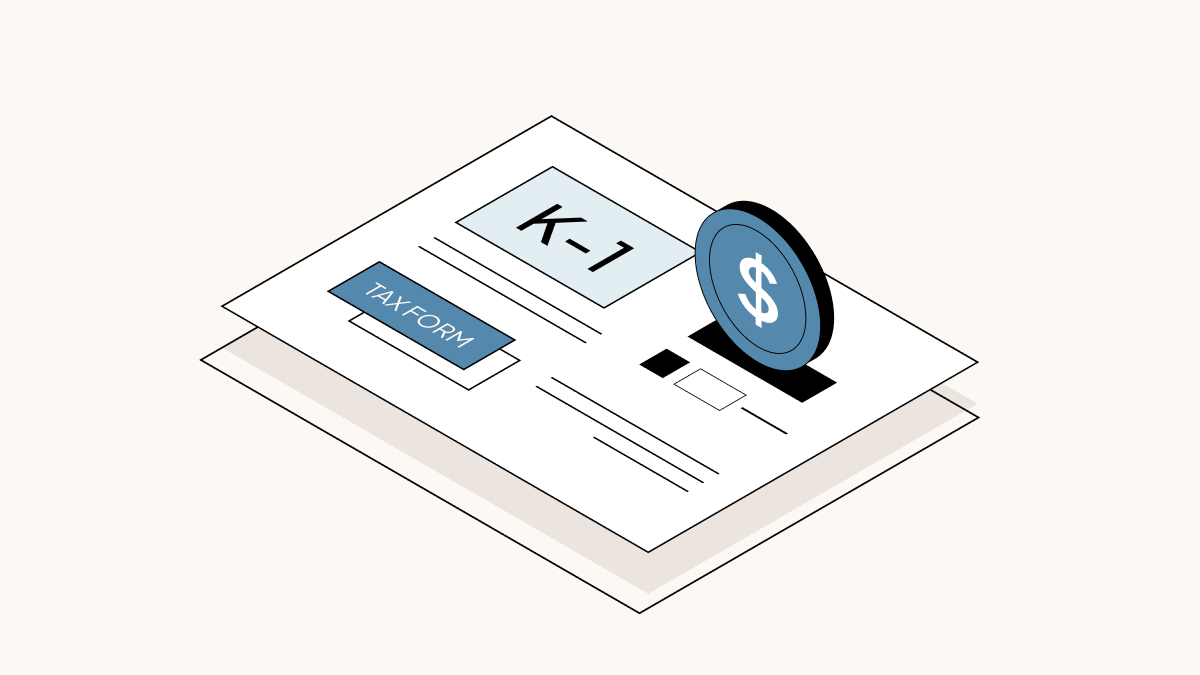What is a Schedule K-1 tax form?
A Schedule K-1 (often simply called a “K-1”) is a tax document that is prepared annually by many limited liability companies (LLC) and other “pass-through” entities (including trusts, estates, and S- corporations) whose taxes may be passed onto partners rather than paid by the company. The K-1 breaks down each partner’s share of the partnership’s income, losses, deductions, and credits for the tax year.
K-1s are typically prepared by the LLC’s accountant and included in the partnership’s tax return, called a Form 1065. They are also distributed to each partner.
A sample K-1 form is available through the IRS website here.
When are K-1s due?
The due date for your limited liability company to file a K-1 with the IRS depends on the fiscal year used by your entity and whether it files for an extension, which is common for LLCs.
If the entity follows the calendar year, K-1s must be filed by March 15. If the entity follows a different fiscal year schedule—for example, a fiscal year ending on January 31 to account for a busy calendar year Q4, as is the case with some retail companies—then the K-1 is due to federal tax authorities on the fifteenth day of the third month after the end of the partnership’s tax year.
Many entities request a six-month extension of time to file the return with the IRS in order to have more time for tax planning and to gather documents. This makes the K-1 due date September 15 for entities that follow the calendar year, or the 15th day of the ninth month after the close of the fiscal year for entities that follow other schedules.
These dates may differ from the dates by which LLCs are obligated to share K-1 information with partners; these deadlines may be included in the partnership agreement.
|
Company’s year end |
Extension? |
Date due |
|
Calendar year |
Did not file for extension |
March 15 |
|
Calendar year |
Filed for extension |
September 15 |
|
Alternate fiscal year |
Did not file for extension |
The 15th day of the third month after the year ends |
|
Alternate fiscal year |
Filed for extension |
The 15th day of the ninth month after the year ends |
Who needs to file a K-1?
The K-1 form is filled out by the LLC or other pass-through entity, and is usually prepared by the accountant who prepares the taxes for the entity.
Individual partners of an LLC do not fill out K-1s—they receive them from the partnership.
Partners should make sure to include the K-1 when preparing their income tax returns. The K-1 tells a partner their share of income, deductions, credits, and other tax-related items as part of their ownership of the LLC for that tax year.
Sometimes LLCs choose to be taxed like C-corporations. In this case, the entity pays taxes, rather than passing it on to partners. In such cases, partners will not receive K-1s. If you’re not sure how your LLC is taxed, check with your LLC’s accountant to see if you should be expecting a K-1.
What is in a K-1 form?
The K-1 takes the total values in the partnership’s 1065 tax return–profit, loss, deductions, credits, dividends and so on—and allocates them by each partner’s ownership percentage, to pass onto each partner their share of the business entity’s tax liability for that year.
The K-1 includes:
-
Information about the partnership
-
The partnership’s EIN
-
The partnership’s address
-
The partnership’s EIN
-
The partnership’s address
-
-
Information about the partner
-
The partner’s social security number
-
The partner’s address
-
The type of partner
-
The partner’s social security number
-
The partner’s address
-
The type of partner
-
-
Each partner’s share of:
-
Ownership
-
Income
-
Liabilities
-
Deductions
-
Credits
-
Dividends
-
Royalties
-
Capital gains
-
Other items
-
Ownership
-
Income
-
Liabilities
-
Deductions
-
Credits
-
Dividends
-
Royalties
-
Capital gains
-
Other items
-
For additional information and a full list of K-1 requirements, visit the IRS website.
What to know about getting an extension
LLCs may request an extension of their filing deadline by filing Form 7004 by the regular due date of the return. Because this could affect the ability of partners to file their individual returns with the proper information, it’s important to review the partnership agreement closely for any obligations to partners regarding sharing an estimated K-1 by a certain date, regardless of whether the LLC has filed for an extension of its federal return.
For partners receiving K-1s from an LLC, they can ask the partnership’s accountant when they should expect to receive the Schedule K-1 form. If the LLC is filing for an extension, partners may need to file for a personal income tax extension as well.
Keep in mind that a request for extension of time to file is not an extension of time to pay the tax liability.
How Carta helps with K-1s
Carta for LLC can help simplify preparing and sending K-1s. The Carta LLC product provides a clean, real-time ownership ledger for LLCs, making it much easier to prepare K-1s. Once the K-1s are prepared by your team, you can send them out through Carta. When you upload the K-1s, Carta’s system will automatically match each form with each interest holder, so you can share one or hundreds of documents at a time with a click of a few buttons. You can also see a record of each K-1 and who it is shared with anytime through the Carta platform.




